Latest News
Capturing Customer Attention with the right Lighting Design

A well thought out lighting design does more than satisfy compliance and safety requirements for illumination; it will allow retailers to highlight products displays, draw focus to merchandise tables, and direct the flow of foot traffic to specific areas within the store environment.
Let us look at the general lighting design principles for an effective retail store layout by creating “Zones”: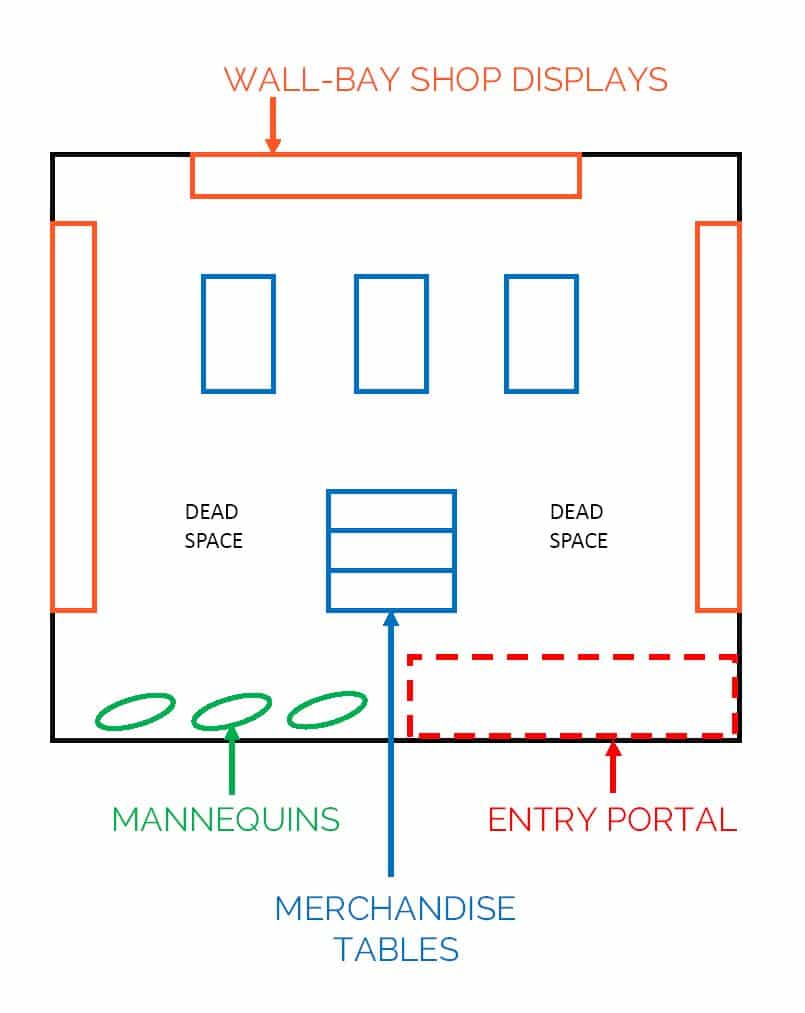
1. Wall-Bay Shop Displays
For wall displays, it is imperative the lighting provides even illumination from top to bottom. These areas require high illuminance levels, generally exceeding 1000+ lux. These areas also benefit from high colour saturation, as it draws attention to the displays.

2. Mannequins
Mannequins positioned in the shop window form the customer’s first point of contact with the brand’s visual merchandising. Also acting as a window to the brand’s products and ethos, mannequins needs to attract and retain the attention of passers-by in a very short timeframe. For this reason, very high illuminance levels (exceeding 2000+ lux) are required to correctly illuminate and emphasise the retail offering. High colour saturation to draw attention, and there must be significant spill light into the general mall area to attract shoppers in.
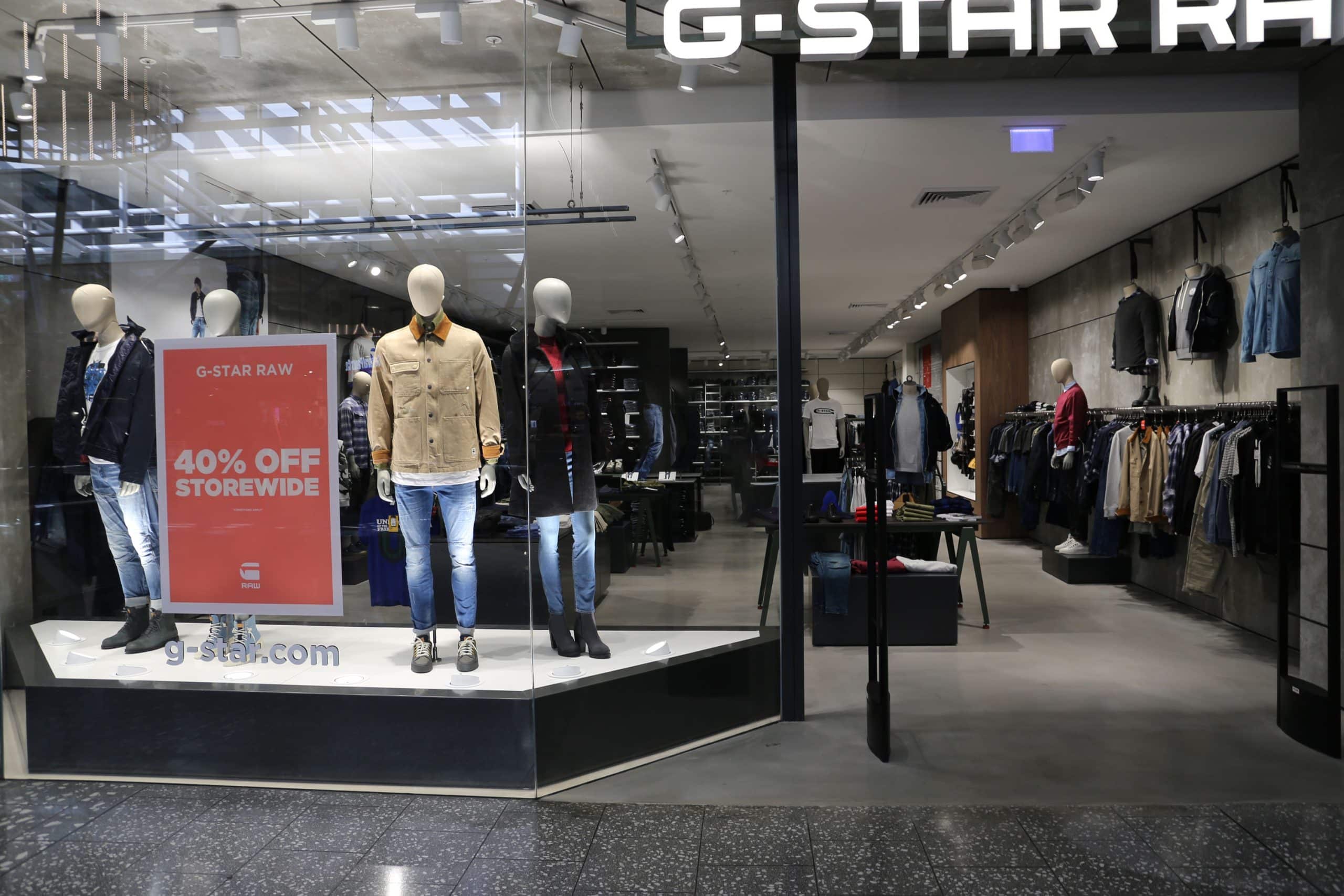
3. Merchandise Tables
These central display tables require specifically targeted illuminance, with levels exceeding 1000+ lux. It is also important to limit light spillage as much as possible into the circulation areas, as it lessens the impact of the targeted illumination. Once again, high colour saturation is preferred to draw attention to the displayed goods.

4. Entry Portal
In order to attract customers into the store, very high illuminance of 1000-2000lux is required here. Often, lighting designers and retailers will prefer fittings spill light into the general mall area to attract shoppers.
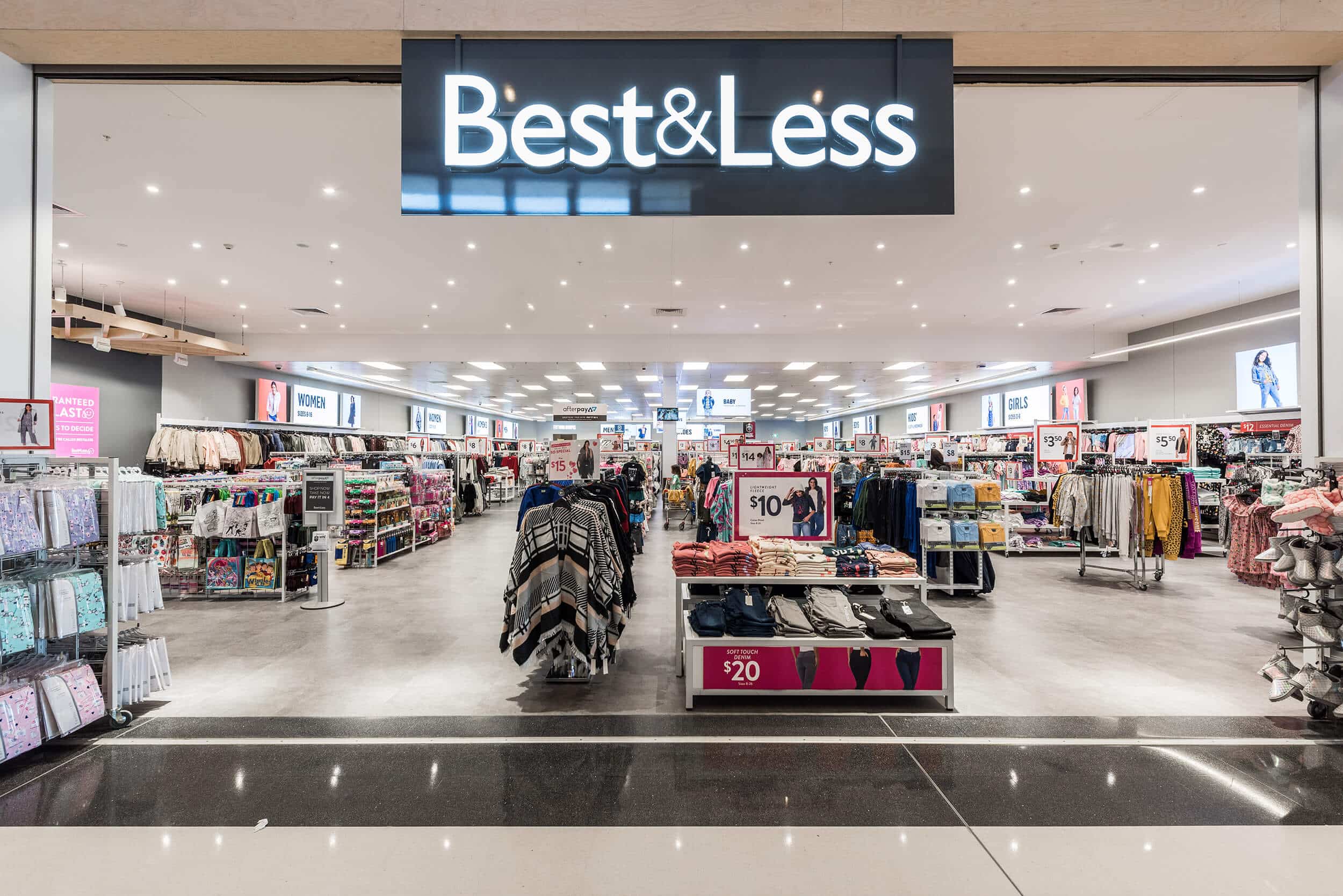
5. Circulation Areas
Lower illuminance levels are required for these areas, with general lighting being enough. The lower illuminance in this space creates a contrast with the more brightly areas, drawing attention to merchandise and away from empty space.In short, ensuring that individual areas of the store are correctly lit, allows retailers to direct traffic within the store, focus attention and highlight product offerings.

Ideal Positioning of Luminaires: Bright Light and the Right Light
The below rendering of wall-bay shop displays is an excellent example of well-planned luminaires combined with a strong, effective lighting design. Illuminance is even from top to bottom, highlighting the merchandise uniformly. The fittings have been aimed precisely so that there is no noticeable light scalloping, and all light is concentrated on merchandise. Note the lower illuminance in the circulation areas. As outlined on the previous page, you can see the strong contrast that is created between the products on display and the general foot traffic areas.
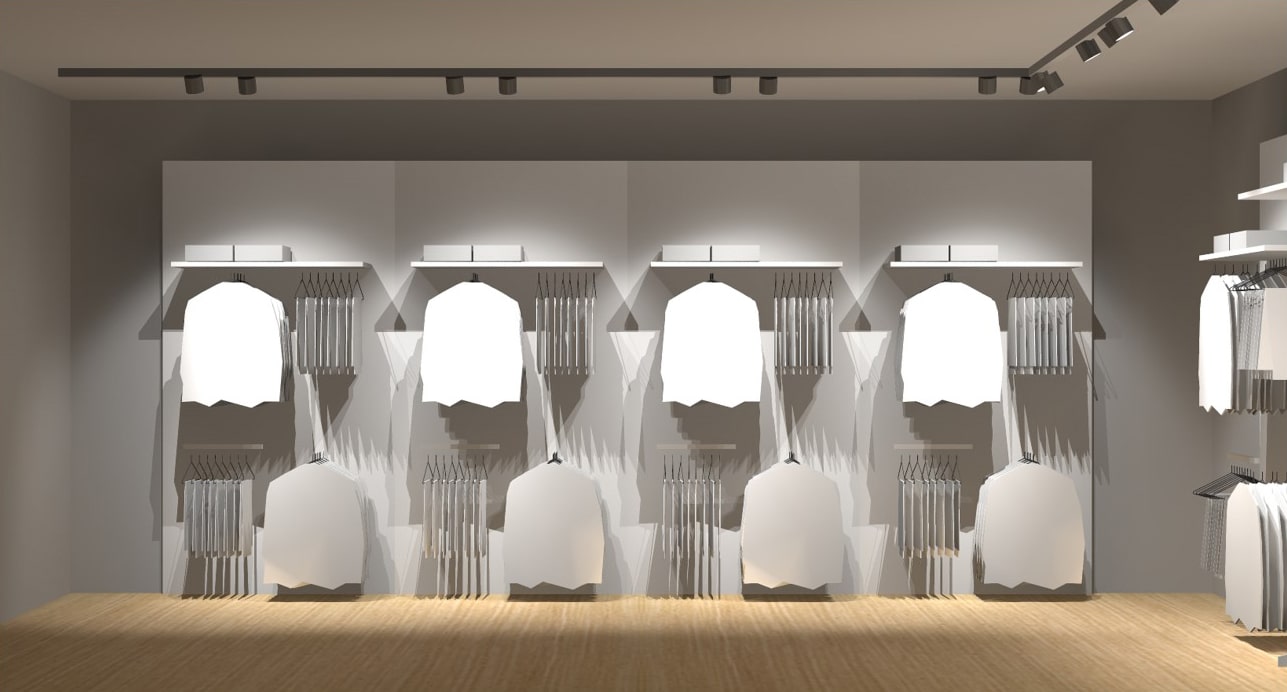
Good Lighting Design In Practice
In the below finished lighting design Aglo completed recently, you can easily see the design principles applied: the false-colour render shows much higher illuminance and targeted lighting over the wall-bay shop displays and the central merchandise stands. It also demonstrates the lower illumination in the general circulation areas.
You can also clearly see the slightly higher illumination at the front of the store (to the right side of the top-right image); this is the spillage into the general mall area, designed to draw eyes and customers into the store.
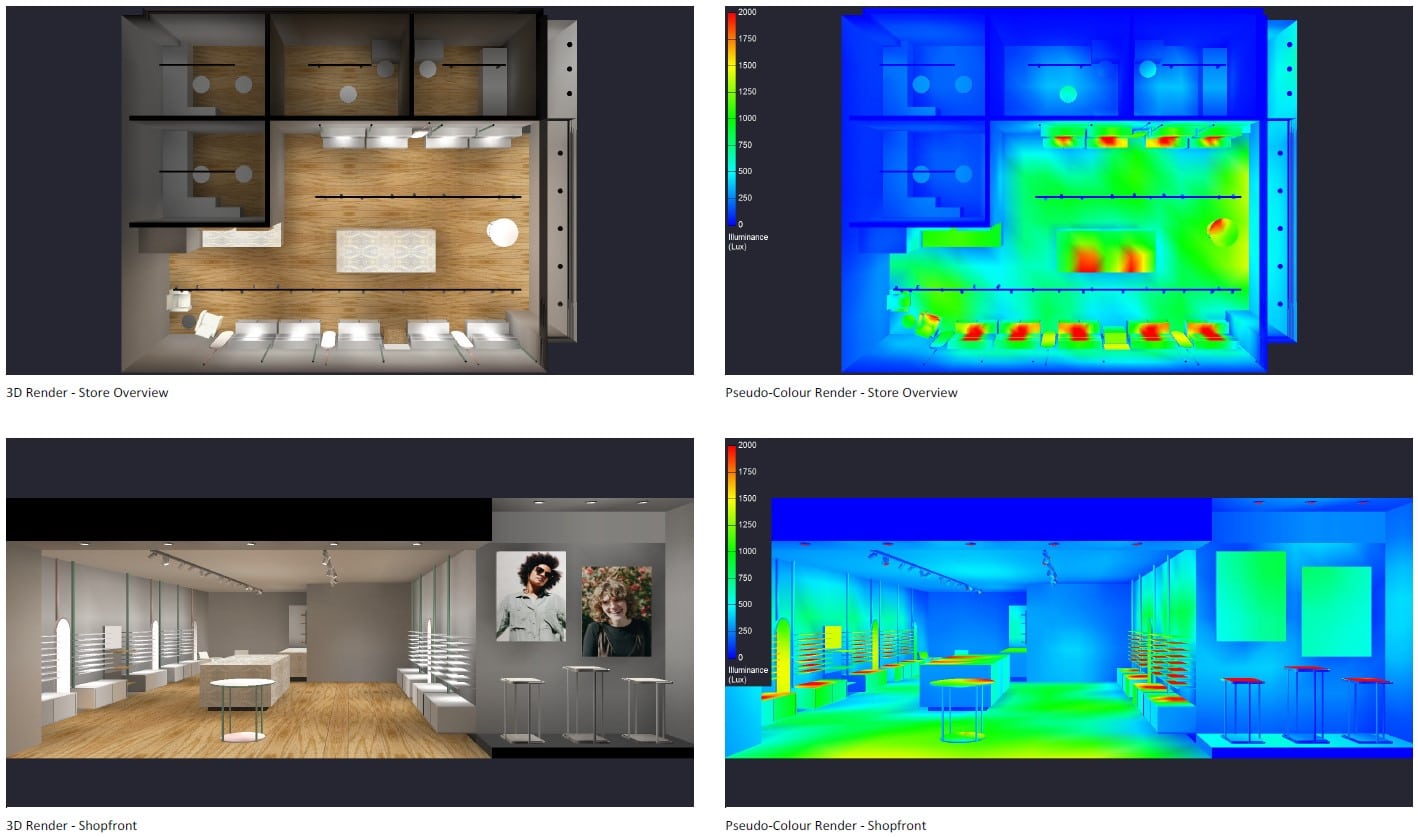
Want to learn more about how to nail your store’s perfect lighting design? Get in touch with us today so we can improve your lighting experience.
We're a Casambi certified commissioning partner